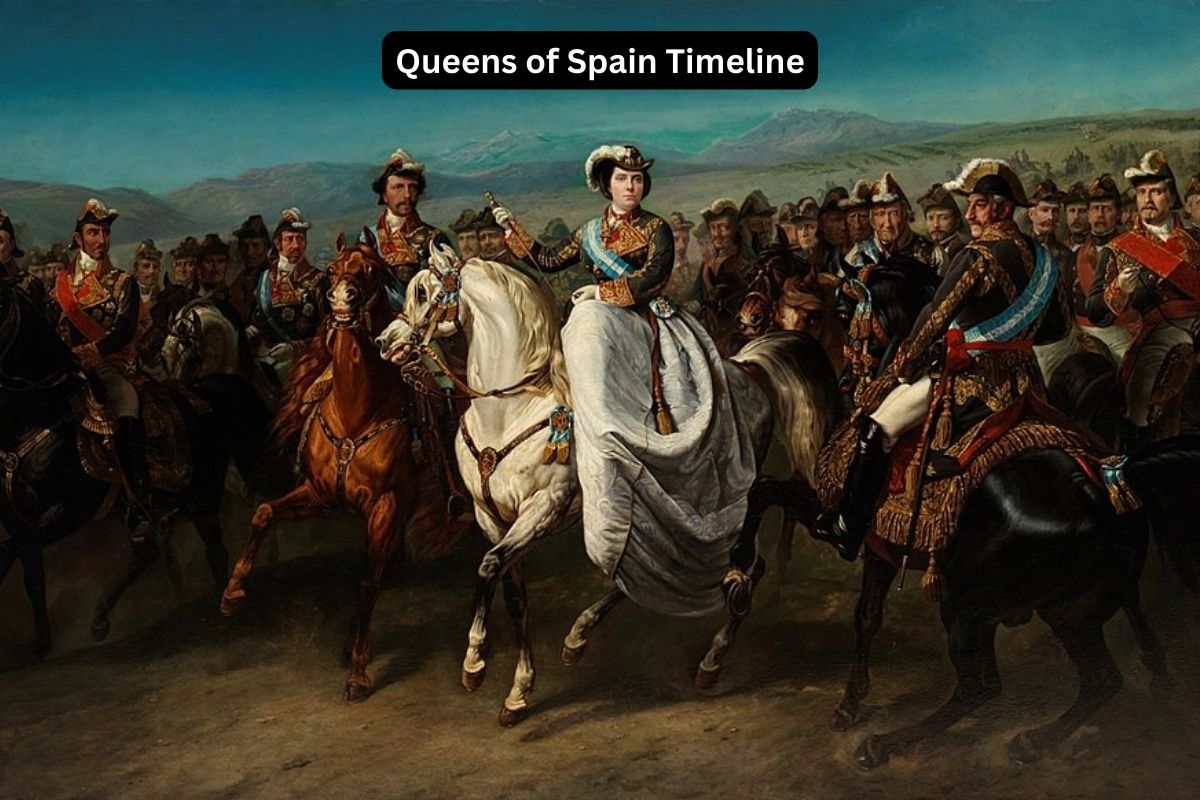Throughout Spanish history, queens have played crucial roles in shaping the destiny of the nation, often wielding significant power and influence behind the throne.
From the formidable Isabella I of Castile, who sponsored Christopher Columbus’ voyages, to the controversial Isabella II, whose reign ended in exile, the queens of Spain have left an indelible mark on the country’s political, cultural, and social landscape.
This article delves into the lives and legacies of these remarkable women, exploring their contributions to Spain and their enduring influence on its history.
| Queen | Dates | Notes |
|---|---|---|
| Isabella I of Castile | 1451-1504 | Sponsored Columbus’ voyages; reconquered Granada |
| Joanna of Castile | 1479-1555 | “Juana la Loca”; mentally unstable; mother of Charles V |
| Isabella of Portugal | 1503-1539 | Married Charles V |
| Mary I of England | 1516-1558 | Married Philip II of Spain; “Bloody Mary” |
| Elizabeth of Valois | 1545-1568 | Married Philip II of Spain |
| Anna of Austria | 1549-1580 | Married Philip II of Spain |
| Margaret of Austria | 1584-1611 | Married Philip III of Spain |
| Elisabeth of France | 1602-1644 | Married Philip IV of Spain |
| Maria Anna of Spain | 1606-1646 | Married Ferdinand III, Holy Roman Emperor |
| Mariana of Austria | 1634-1696 | Served as regent of Spain |
| Maria Luisa of Savoy | 1688-1714 | Married Philip V of Spain |
| Isabella Farnese | 1692-1766 | Played significant role in Spanish politics |
| Barbara of Portugal | 1711-1758 | Married Ferdinand VI of Spain |
| Maria Amalia of Saxony | 1724-1760 | Married Charles III of Spain |
| Maria Luisa of Parma | 1751-1819 | Married Charles IV of Spain |
| Maria Isabel of Portugal | 1797-1818 | Married Ferdinand VII of Spain |
| Maria Christina of the Two Sicilies | 1806-1878 | Served as regent for Isabella II |
| Isabella II of Spain | 1830-1904 | Deposed in 1868 |
Timeline of the Queens of Spain
Isabella I of Castile (1451-1504):
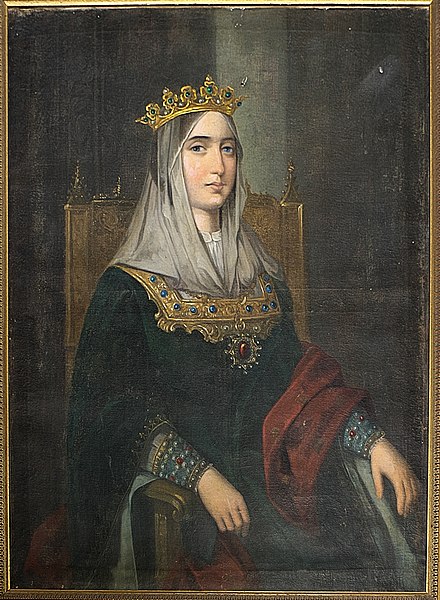
Isabella I of Castile, also known as Isabella the Catholic, was one of the most influential monarchs in Spanish history.
Born in 1451, Isabella became queen of Castile in 1474 after the death of her half-brother, Henry IV. She married Ferdinand II of Aragon in 1469, forming a powerful union that laid the groundwork for the unification of Spain.
Also Read: Kings of Spain Timeline
Isabella and Ferdinand are famous for sponsoring the voyages of Christopher Columbus, which led to the European exploration and colonization of the Americas. Columbus’s first voyage in 1492 was funded by the Spanish crown under Isabella’s patronage.
In 1492, Isabella and Ferdinand completed the Reconquista, the centuries-long Christian reconquest of the Iberian Peninsula, by capturing Granada, the last Muslim stronghold in Spain.
Isabella’s reign also saw the establishment of the Spanish Inquisition in 1478, aimed at maintaining Catholic orthodoxy and suppressing heresy.
Isabella died in 1504, leaving a unified Spain and a legacy of religious fervor and exploration.
Joanna of Castile (1479-1555):
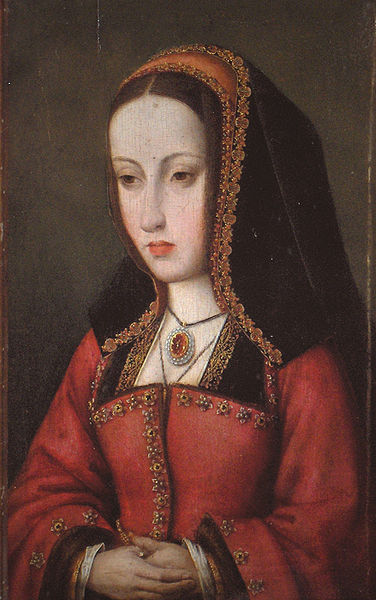
Joanna, also known as Joanna the Mad or Juana la Loca, was the daughter of Isabella I and Ferdinand II, inheriting the throne of Castile upon her mother’s death in 1504.
Joanna’s reign was marked by her struggle with mental illness, which led to her being declared unfit to rule. Her husband, Philip the Handsome, effectively ruled in her place.
Also Read: King Ferdinand and Queen Isabella Facts
Despite her incapacity, Joanna remained the nominal queen of Castile until her death in 1555. Her son, Charles V, inherited the Spanish crown and became one of the most powerful rulers in Europe, overseeing an empire that spanned across the Americas and much of Europe.
Isabella of Portugal (1503-1539):
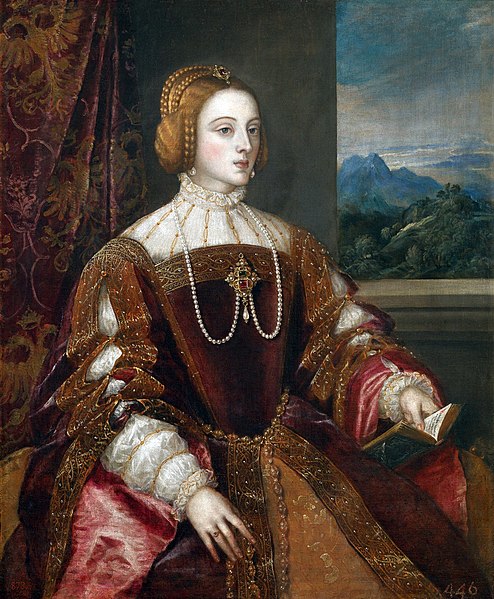
Isabella of Portugal was the first wife of Charles V, Holy Roman Emperor, and the mother of Philip II of Spain.
Born in 1503, Isabella married Charles V in 1526, strengthening the alliance between Spain and Portugal.
Isabella played a significant role in the politics of the Habsburg Empire, but her reign as empress was cut short by her untimely death in 1539 at the age of 36.
Isabella’s marriage to Charles V produced several children, including Philip II, who would go on to become one of the most powerful monarchs in Spanish history, ruling over Spain during its Golden Age.
Mary I of England (1516-1558):

Mary I, also known as Mary Tudor or “Bloody Mary,” was the daughter of Henry VIII of England and Catherine of Aragon, making her the granddaughter of Isabella I of Castile and Ferdinand II of Aragon.
Born in 1516, Mary became queen regnant of England in 1553 after the death of her half-brother, Edward VI. She was the first woman to rule England in her own right.
Mary married Philip II of Spain, son of Emperor Charles V, in 1554, seeking to strengthen the Catholic alliance in Europe and restore Roman Catholicism in England.
Mary’s reign is infamous for her vigorous persecution of Protestants, which earned her the nickname “Bloody Mary.” Hundreds of Protestants were burned at the stake during her five-year reign.
Mary’s marriage to Philip II was politically motivated and lacked personal compatibility. She died childless in 1558, ending the Tudor line of succession in England.
Elizabeth of Valois (1545-1568):
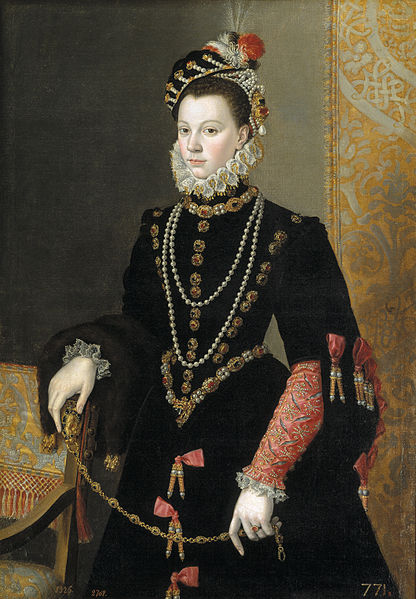
Elizabeth of Valois was the daughter of Henry II of France and Catherine de’ Medici. She married Philip II of Spain in 1559, becoming his third wife.
The marriage between Elizabeth and Philip II was arranged as part of the Treaty of Cateau-Cambrésis, which ended the Italian Wars between France and Spain.
Elizabeth was known for her beauty, intelligence, and piety. She had a close relationship with her stepchildren, including Don Carlos, though his mysterious death led to rumors of Philip’s involvement.
Elizabeth’s marriage to Philip II was relatively harmonious, and she played a significant role in court life and diplomacy. However, she faced challenges, including the jealousy of her stepmother-in-law, Queen Mariana.
Elizabeth died in 1568 at the age of 23, shortly after giving birth to her daughter Isabella Clara Eugenia. Her death deeply affected Philip II, who mourned her loss deeply.
Anna of Austria (1549-1580):
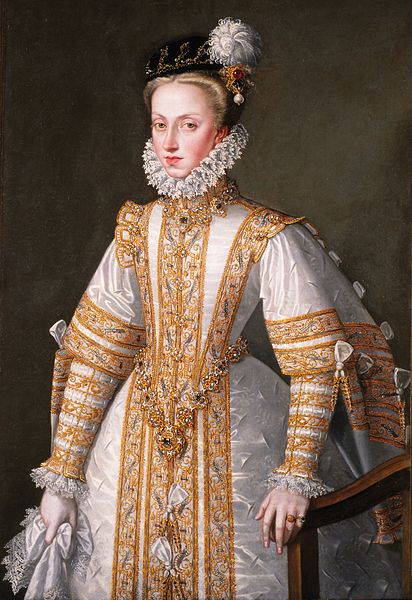
Anna of Austria was the daughter of Holy Roman Emperor Maximilian II and Maria of Spain, making her Philip II’s cousin. She married Philip II of Spain in 1570, becoming his fourth wife.
Anna’s marriage to Philip II was part of his efforts to forge political alliances within Europe. Despite the significant age difference between them, the marriage was reportedly happy.
Anna’s primary role was to produce an heir for Philip II’s throne. However, she faced difficulties in conceiving, and her only child, Philip III, was born six years into their marriage.
Anna played a relatively minor role in Spanish politics compared to some of her predecessors. She focused on her domestic life and religious piety, patronizing various charitable works and religious institutions.
Anna died in 1580 at the age of 31, just a few days after giving birth to her last child. Her death was a significant loss for Philip II, who deeply mourned her passing.
Margaret of Austria (1584-1611):
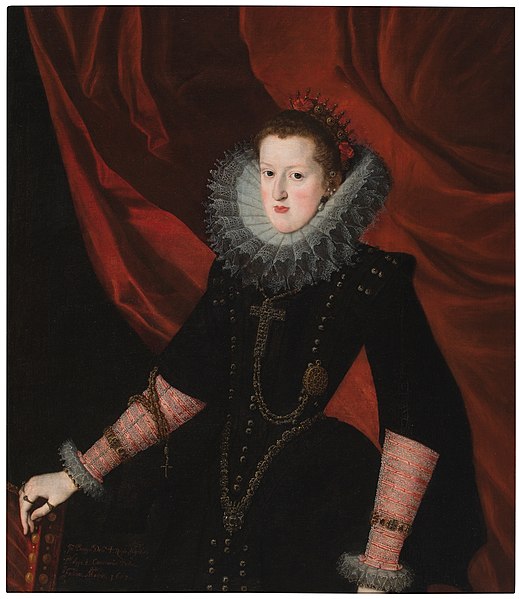
Margaret of Austria was born into the powerful Habsburg family, the daughter of Archduke Charles II of Austria and Maria Anna of Bavaria.
She married Philip III of Spain in 1599, cementing an alliance between the Habsburgs and the Spanish crown.
Margaret was known for her intelligence, piety, and dedication to her family. She played an active role in court life and supported various cultural and religious initiatives.
As queen consort, Margaret was involved in diplomatic efforts and patronized artists and writers. She also served as a mediator between her husband and their son, the future Philip IV, during times of tension.
Margaret’s reign was marked by the flourishing of Spanish Baroque art and culture, with artists like Velázquez and writers like Cervantes gaining prominence.
Elisabeth of France (1602-1644):
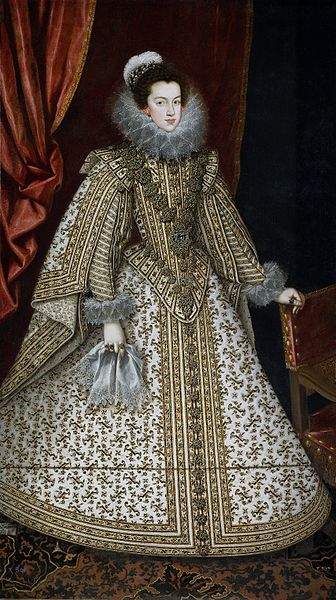
Elisabeth of France was the daughter of Henry IV of France and Marie de’ Medici. She married Philip IV of Spain in 1615, becoming his first wife.
The marriage between Elisabeth and Philip IV was politically motivated, aiming to strengthen ties between the French and Spanish crowns.
Elisabeth was renowned for her beauty, intelligence, and grace. She played an active role in court life, patronizing artists and supporting cultural initiatives.
Despite initial difficulties in their marriage, Elisabeth and Philip IV grew to have a close relationship. She exerted considerable influence over her husband, particularly in matters of culture and diplomacy.
Elisabeth’s sudden death in 1644, at the age of 42, was a devastating blow to Philip IV. He mourned her deeply and commissioned numerous works of art to honor her memory.
Maria Anna of Spain (1606-1646):
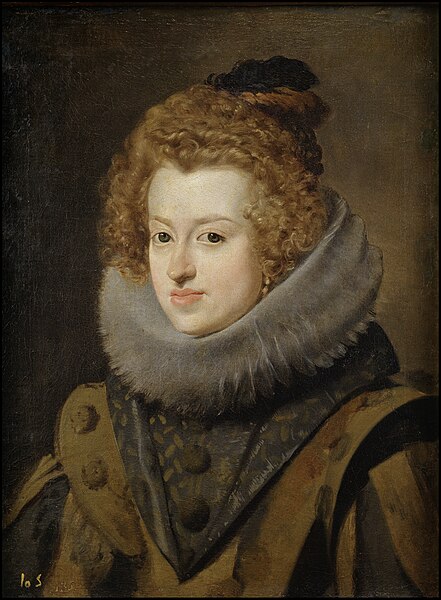
Maria Anna of Spain was the daughter of Philip III of Spain and Margaret of Austria. She married Ferdinand III, Holy Roman Emperor, in 1631, becoming Holy Roman Empress.
Maria Anna’s marriage to Ferdinand III was part of the Habsburg strategy to strengthen ties between the Spanish and Austrian branches of the dynasty.
Maria Anna was known for her piety, humility, and dedication to her family. She played a supportive role to her husband, accompanying him on his travels and supporting his political endeavors.
Despite her relatively short life, Maria Anna left a lasting impact through her patronage of the arts and her support for charitable causes. She was revered as a paragon of Habsburg virtues.
Maria Anna’s death in 1646, at the age of 40, was deeply mourned by Ferdinand III and the Habsburg court. She was remembered as a devoted wife, mother, and empress.
Mariana of Austria (1634-1696):
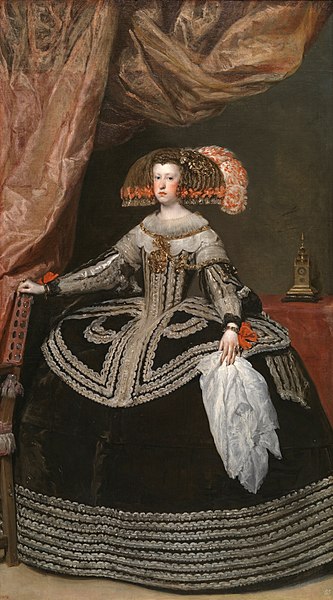
Mariana of Austria was the daughter of Emperor Ferdinand III and Maria Anna of Spain. She married her maternal uncle, Philip IV of Spain, in 1649, becoming his second wife.
Mariana became queen consort of Spain during a turbulent period marked by economic decline, military conflicts, and political intrigue.
As queen consort, Mariana initially exerted little influence over her husband’s affairs. However, following Philip IV’s death and the accession of their son, Charles II, Mariana assumed the role of regent due to her son’s young age.
Mariana’s regency was marked by internal strife, foreign intervention, and the decline of Spanish power. She faced challenges from rival factions at court and struggled to maintain stability in the face of external threats.
Mariana’s regency ended with the death of Charles II in 1700, marking the end of the Spanish Habsburg dynasty. She retired from public life and spent her remaining years in seclusion, reflecting on her tumultuous reign.
Maria Luisa of Savoy (1688-1714):
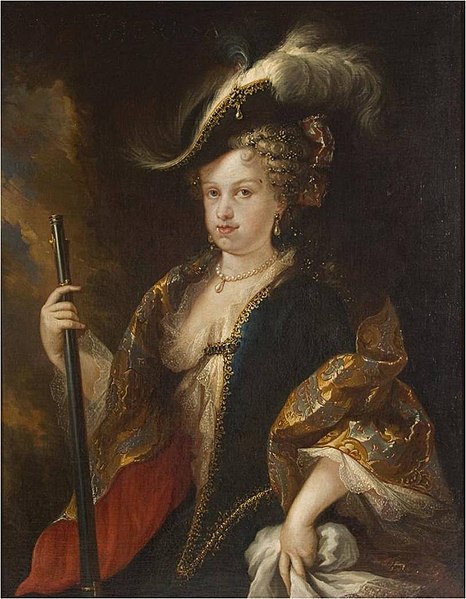
Maria Luisa of Savoy married Philip V of Spain in 1701, becoming queen consort of Spain.
As queen consort, Maria Luisa played a significant role in Spanish court life. She was known for her charm, intelligence, and political astuteness.
Maria Luisa supported her husband’s policies and worked to strengthen ties between Spain and other European powers, particularly France.
Her reign coincided with the War of the Spanish Succession, a conflict over the succession to the Spanish throne. Maria Luisa supported her husband’s claim to the throne, which was contested by other European powers.
The war ended with the Treaty of Utrecht in 1713, which secured Philip V’s position as king of Spain but imposed limitations on the Spanish Empire.
Isabella Farnese (1692-1766):
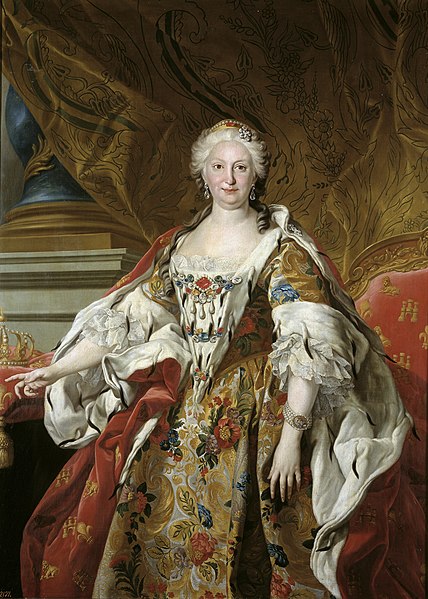
Isabella Farnese married Philip V of Spain in 1714, becoming queen consort of Spain.
Isabella Farnese was a highly influential queen consort who played a significant role in Spanish politics during the reigns of her husband, Philip V, and her stepson, Ferdinand VI.
She was known for her ambition and political acumen, working to advance the interests of her family, particularly her sons, in the complex power struggles of European politics.
Isabella Farnese was instrumental in securing the succession of her sons to various Italian duchies and supporting Spain’s interests in the War of the Polish Succession and the War of the Austrian Succession.
Her tenure as queen consort saw significant cultural and architectural developments in Spain, as she patronized artists, architects, and musicians.
Barbara of Portugal (1711-1758):
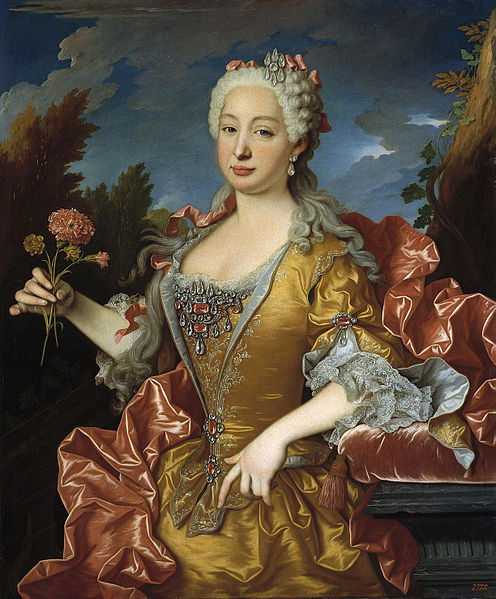
Barbara of Portugal married Ferdinand VI of Spain in 1729, becoming queen consort of Spain.
Barbara was the daughter of King John V of Portugal and Maria Anna of Austria, making her a member of the Portuguese and Habsburg royal families.
As queen consort, Barbara was known for her piety, charity, and devotion to her husband. She supported various charitable causes and religious institutions.
Barbara’s marriage to Ferdinand VI was reportedly a happy one, characterized by mutual affection and respect. However, their reign was overshadowed by political challenges and economic difficulties.
Barbara’s death in 1758 was a significant loss for Ferdinand VI, who mourned her deeply. Her legacy as queen consort was remembered for her kindness, generosity, and devotion to her family and her adopted country of Spain.
Maria Amalia of Saxony (1724-1760):
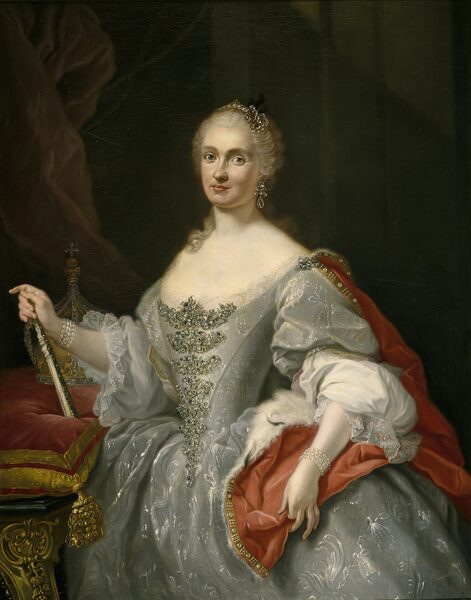
Maria Amalia of Saxony married Charles III of Spain in 1738, becoming queen consort of Spain.
Maria Amalia was the daughter of Augustus III of Poland and Elector of Saxony. Her marriage to Charles III was part of a diplomatic alliance between Spain and Saxony.
As queen consort, Maria Amalia was known for her intelligence, charm, and elegance. She played an active role in court life and supported various cultural and charitable initiatives.
Maria Amalia’s marriage to Charles III was reportedly a happy one, characterized by mutual affection and respect. She exerted considerable influence over her husband, particularly in matters of culture and diplomacy.
Maria Amalia’s death in 1760, at the age of 36, was a significant loss for Charles III, who mourned her deeply. Her legacy as queen consort was remembered for her grace, wit, and contributions to Spanish society and culture.
Maria Luisa of Parma (1751-1819):
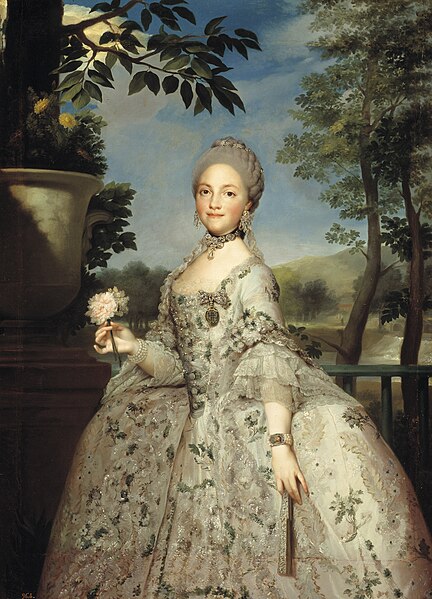
Maria Luisa of Parma married Charles IV of Spain in 1765, becoming queen consort of Spain.
Maria Luisa was the daughter of Philip, Duke of Parma, and Louise Élisabeth of France. Her marriage to Charles IV was arranged as part of the Bourbon family alliances.
As queen consort, Maria Luisa exerted considerable influence over her husband and Spanish politics. She was known for her intelligence, ambition, and political astuteness.
Maria Luisa played a significant role in the complex power struggles of the late 18th century, particularly during the tumultuous reign of her husband, Charles IV.
Her tenure as queen consort was marked by political intrigue, economic difficulties, and social unrest, culminating in the downfall of the Spanish monarchy during the Napoleonic Wars.
Maria Isabel of Portugal (1797-1818):
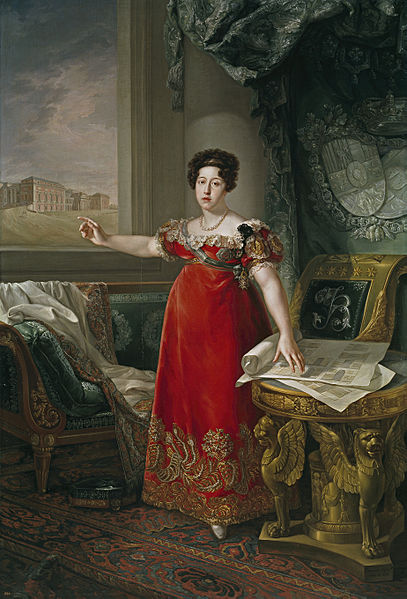
Maria Isabel of Portugal married Ferdinand VII of Spain in 1816, becoming queen consort of Spain.
Maria Isabel was the daughter of King John VI of Portugal and Charlotte of Spain. Her marriage to Ferdinand VII was part of the Bourbon family alliances.
As queen consort, Maria Isabel faced the challenges of navigating the turbulent political landscape of early 19th-century Spain. She supported her husband’s efforts to consolidate power and restore absolute monarchy.
Maria Isabel’s reign as queen consort was overshadowed by political unrest, including conflicts with liberal and nationalist movements seeking constitutional reforms.
Her death in 1818, at the age of 20, was a significant loss for Ferdinand VII, who mourned her deeply. Her legacy as queen consort was remembered for her grace, intelligence, and devotion to her husband.
Maria Christina of the Two Sicilies (1806-1878):
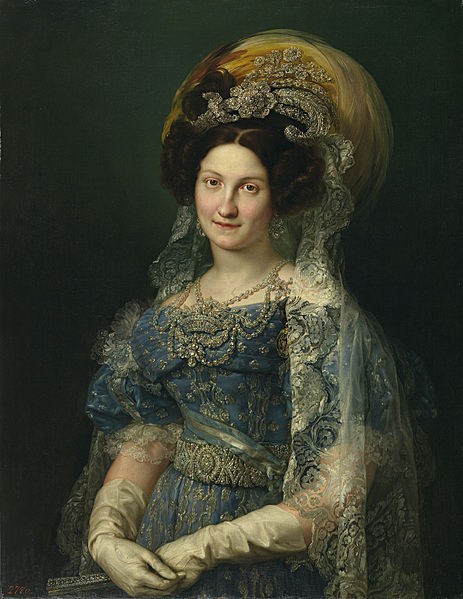
Maria Christina of the Two Sicilies married Ferdinand VII of Spain in 1829, becoming queen consort of Spain.
Maria Christina was the daughter of King Francis I of the Two Sicilies and Maria Isabella of Spain. Her marriage to Ferdinand VII was part of the Bourbon family alliances.
As queen consort, Maria Christina played a significant role in Spanish politics, particularly during the regency for her daughter, Isabella II.
Maria Christina faced numerous challenges, including political instability, economic difficulties, and conflicts with liberal and conservative factions vying for power.
Her regency for Isabella II was marked by controversy and scandal, including accusations of corruption and abuse of power.
Isabella II of Spain (1830-1904):
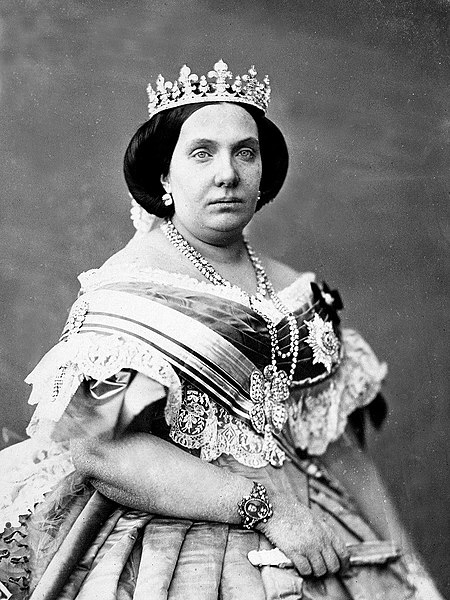
Isabella II became queen regnant of Spain in 1833 at the age of three, following the death of her father, Ferdinand VII.
Isabella II’s reign was marked by political instability, social unrest, and conflicts between liberal and conservative factions.
She married Francis, Duke of Cádiz, in 1846, but their marriage was troubled and ended in separation.
Isabella II’s rule was characterized by authoritarianism, corruption, and opposition to constitutional reforms. She was eventually deposed in 1868 during the Glorious Revolution.
After her abdication, Isabella II went into exile in France, where she spent the rest of her life. She died in 1904, and her son Alfonso XII succeeded her as king of Spain.
